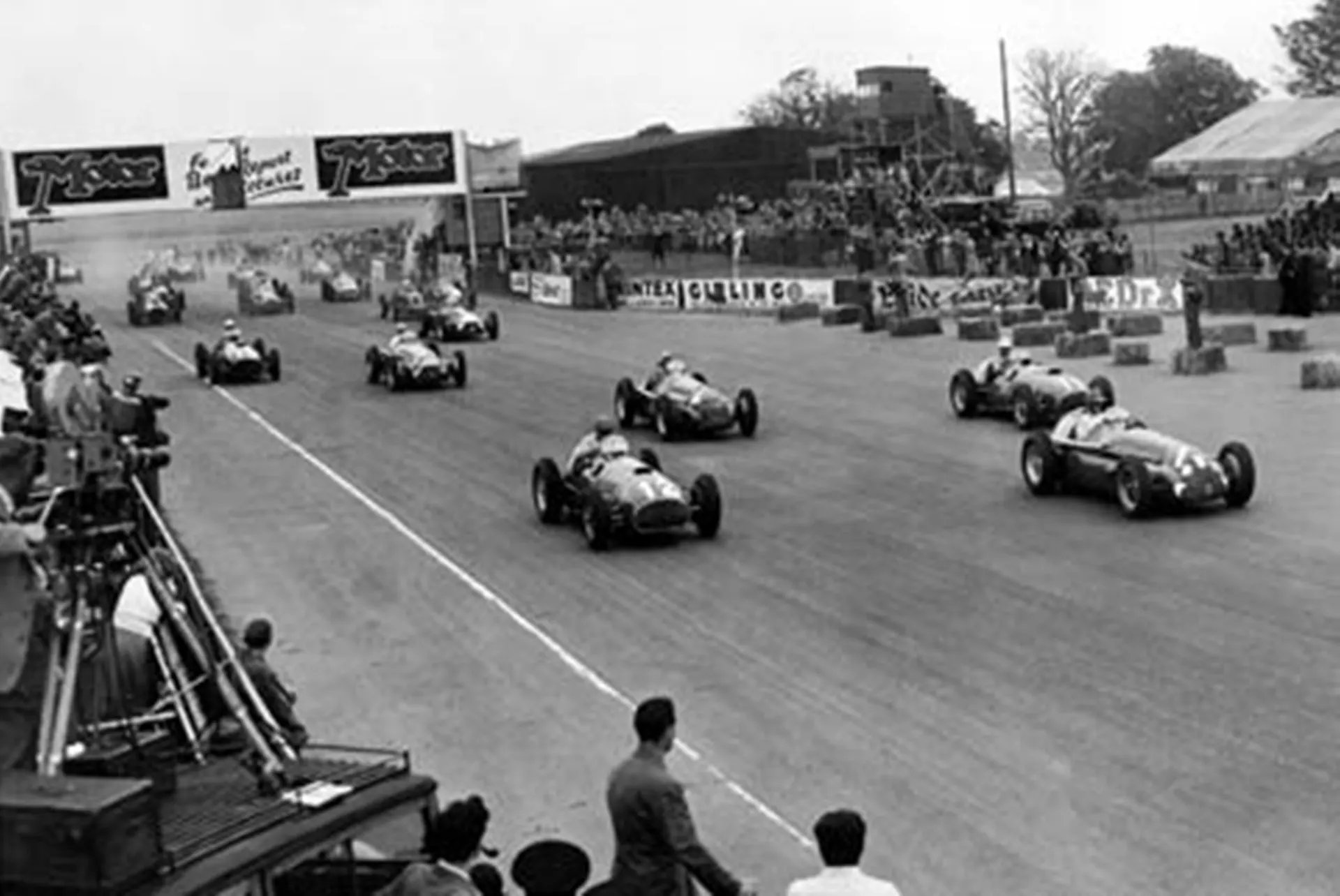From 1950 to 2019, why Silverstone still means so much to Formula 1

The Formula 1 calendar looks very different to the first iteration way back in 1950, but one of those circuits – indeed the inaugural Grand Prix – remains part of the furniture. And on Wednesday, it was confirmed that the iconic Silverstone track will be sticking around for a bit longer, too...
F1 has made no secret of its ambition to bring the championship to destination cities and new markets. Next year, of course, will see the first ever Vietnam Grand Prix. But it has also said that traditional races and circuits, which form a strand of F1’s DNA, must stay. In announcing the deal, F1 chief Chase Carey said Silverstone is a “signature” circuit and that the British Grand Prix is “one of the core foundations of” the sport.
The fans love it. Driving up to the circuit for the press conference on Wednesday, you could already see the campsites that straddle the circuit were starting to fill up ahead of the weekend. The event is more than a race, it’s a festival, and one which only enhances the love for F1 in Britain.
This year is set to be a sell-out, according to Silverstone chief Stuart Pringle, meaning around 140,000 will be in the Grand Prix on Sunday. That’s an astonishing attendance that most sports, let alone rival races, can only dream of. With a five-year deal now secured, Pringle said there are already plans in place to increase general admission areas in future to increase the capacity, such is the demand.
John Grant, Chairman of the British Racing Drivers’ Club (BRDC) which runs the venue, says they are pumping around £100m into developing new facilities to Silverstone, helping it contend with some of the super swanky venues that have emerged on the calendar in recent years. That includes things like the Silverstone Experience, a family-themed visitor attraction, and a Hilton Garden Inn, which is being built on the start-finish straight, with views of the start and the pits, in time for next year’s Grand Prix.
But while Silverstone’s venue is moving with the times – they built a new pit and paddock complex (completed in 2011) – the track has remained true to its roots. At 5.891km, laced with plenty of high-speed corners including the dramatic Maggots-Becketts-Chapel complex, Silverstone is a true power circuit that allows the talent of the drivers to shine through.
As the drivers will tell you, they absolutely love the place. It creates the conditions for great racing, too - who can forget such cracking moments as Nigel Mansell sensationally dummying Nelson Piquet on Hangar Straight in 1987?
Sure, some of the gravel traps and iconic corners like Bridge have disappeared, and it has been resurfaced over the years, including ahead of this year’s race, which changes the characteristics slightly. But this place is still one of the toughest driving challenges in the world.

It’s a special place for the teams, too. Seven of the 10 are based in the UK, with Racing Point the closest at just over the road from the main gates. But even those based elsewhere have a soft spot for Silverstone. Ferrari, for example, are big supporters of Silverstone, having won their first race at the venue in 1951.
It took some time, but as F1 commercial chief Sean Bratches says, Silverstone “sits in the pantheon of Formula 1 as one of the great races” and it’s a shot in the arm for the championship that it will be on the calendar for at least another five years.
That doesn’t mean that the much-talked about London Grand Prix is out of the question, though. F1 has talked about destination cities and Britain’s capital would fit that tag nicely. Carey said in the short term, the focus is “purely here on Silverstone” but said he looks forward to continuing discussions regarding a London race.
Silverstone’s owners are open to such a race, too, with Grant saying he thinks “there is room for the two races to coexist side-by-side as long as they had sufficient separation in time and as long as our commercial interests are recognised in some reasonably flexible way”.
Perhaps we’ll get the best of both worlds, then, but for now, we can focus on the fact that one of F1’s great race tracks – that has delivered countless great races – will be on the calendar for the next five years.
Next Up

.webp)
/TWGMS-F1-Announcement-1298%20(1)%20(1).webp)

.webp)
